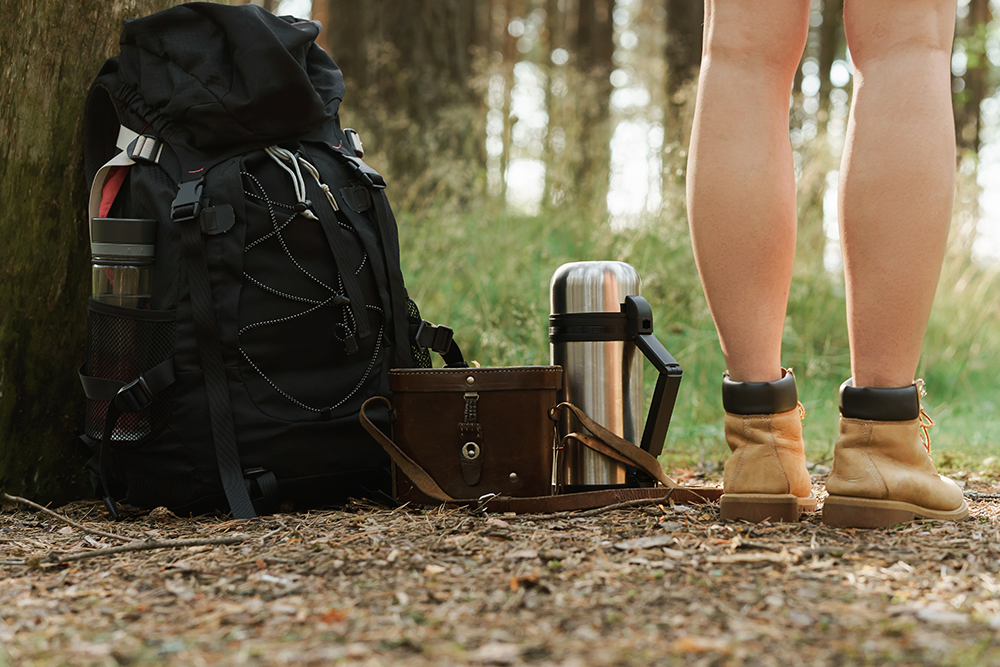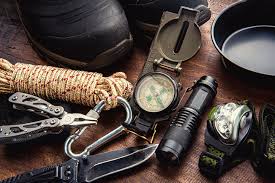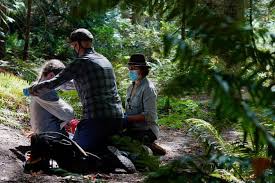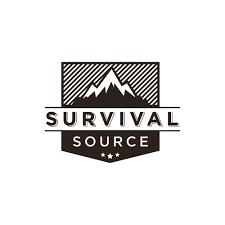You need to Get Prepared and be pro-active and ready for any unexpected disaster. If you’re feeling uncertain about how to start prepping or whether you’re doing it right, you’re not alone. This beginner’s emergency preparedness checklist offers straightforward, expert-backed advice to help you take the first steps with confidence. By the time you’re finished, you’ll be prepared for most situations that could come your way.
>>>>>>><<<<<<<
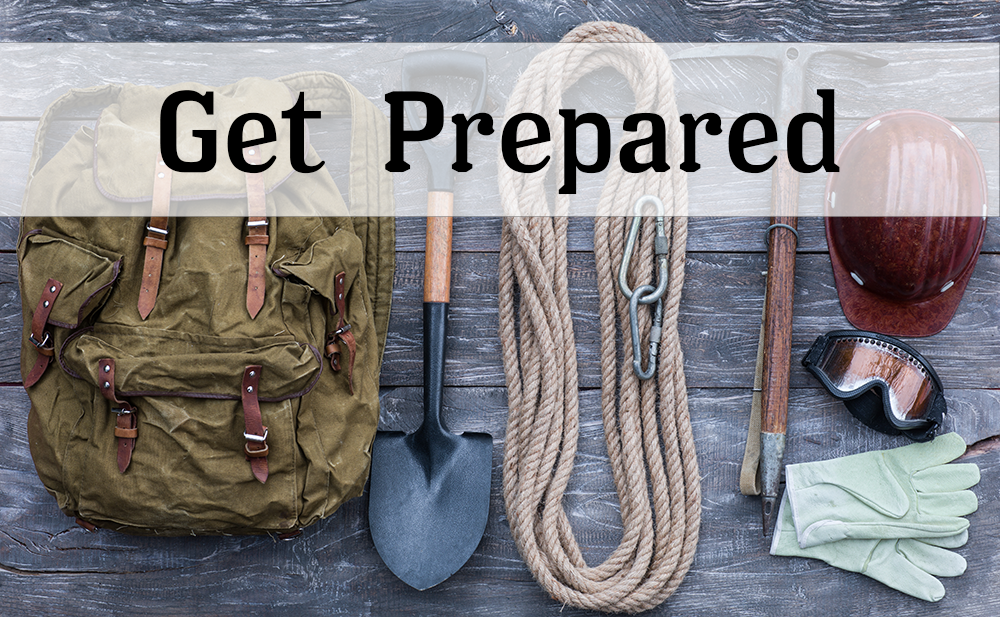
>>>>>>><<<<<<<
Whether you’re concerned about job loss, home security, car accidents, power outages, natural disasters, or even long-term economic downturns, it’s essential to start preparing now. Waiting until disaster strikes is too late. Preparedness is all about planning ahead.
Millions of people from all walks of life are taking preparedness seriously, and the movement is growing. In an increasingly unpredictable world, many realize they can’t depend on others to save them. But we get it: prepping can feel overwhelming, especially with so much misinformation out there.
Get Prepared | Helpful Resources
1. Gardening Supplies
Self-Sufficiency and Home Gardens: As sustainability becomes a priority, more people are starting home gardens to grow their own food. Popular trends include vertical gardening for small spaces, using composting techniques to reduce waste, and organic pest control methods.
Heirloom Seeds vs. GMOs: The movement toward heirloom seeds is growing as people look for non-GMO, natural seed varieties that produce nutrient-rich crops. Encouraging the use of heirloom seeds for long-term food security is vital for preparedness.
2. Emergency Survival Food
Freeze-Dried Meals: Pre-packaged, freeze-dried foods that last 25+ years are becoming increasingly popular for emergencies. These meals are compact, nutritionally dense, and easy to store, making them ideal for long-term disaster preparedness.
Dehydrating and Canning: DIY food preservation, such as dehydrating fruits and vegetables or canning meals, is also trending. Sharing tutorials on preserving food at home can help people prepare in advance for supply chain disruptions.
3. Essential Oils
- Natural First Aid Kits: Essential oils are gaining attention for their use in natural first aid and holistic healing. Oils like tea tree, lavender, and eucalyptus can be part of a prepper’s toolkit for cuts, burns, and respiratory support.
- Stress and Immunity Support: In uncertain times, oils like frankincense, lemon, and oregano are used to support the immune system and reduce anxiety. Providing guides on how to build an essential oil survival kit can help readers prepare for a variety of situations.
4. Nuclear & Biological Preparedness
- Radiation Protection Gear: With global uncertainties, people are looking into protective gear for nuclear threats, such as radiation suits, potassium iodide tablets, and Geiger counters. Highlighting the most reliable brands and products in this space can help readers make informed decisions.
- Biological Threat Readiness: Gas masks, air purifiers, and decontamination solutions are essential in preparedness against biological threats. Sharing information on proper storage, maintenance, and usage of this equipment is crucial.
5. Seeds for Survival
- Seed Vaults: Preppers are increasingly focusing on building seed vaults with non-hybrid, non-GMO seeds that can be stored long-term. These vaults are essential for self-reliance in case of food shortages, offering a renewable food source year after year.
- Companion Planting: This method, which involves growing plants that benefit each other, is gaining traction in survival gardening. It can increase yields and reduce the need for chemical pesticides or fertilizers.
6. Survival Gadgets
- Solar Chargers and Power Banks: As people prepare for potential grid failures, solar-powered gadgets like chargers, lights, and radios are becoming essential. These devices ensure access to power for critical tools and communications when electricity is unavailable.
- Multi-Function Tools: Compact tools that serve multiple purposes, such as fire starters, knives, and water purifiers, are highly sought after for emergencies. Reviewing and recommending the most versatile and durable gadgets is a valuable resource.
7. Survival Gear
- Bug-Out Bags: A well-prepared bug-out bag with essentials such as first aid, shelter, clothing, and navigation tools is a cornerstone of modern survival planning. Offering a guide on what to include and how to maintain these bags is essential for preparedness enthusiasts.
- Tactical Gear: Items like military-grade flashlights, tactical vests, and reinforced boots are trending for their durability and utility. Sharing insights on the best gear for various climates and terrains can be valuable to interested readers.
8. Water Filters
- Portable Water Purifiers: Personal water filtration systems, such as portable straw filters and gravity bags, are essential for emergency situations where clean water is scarce. Reviewing different systems and their benefits can guide others in choosing the right filter for their needs.
- Rainwater Harvesting: This technique is gaining traction as a sustainable way to collect and store water for long-term use. Encouraging the setup of rainwater harvesting systems and proper filtration methods is a critical step toward water independence.
The goal to Get Prepared is simple: to minimize the risk of major life disruptions and to recover quickly when they occur. It’s not about extreme measures like bunkers and bullets — it’s about practical steps, like keeping a fire extinguisher in your kitchen or having supplies for a few weeks of self-reliance.
Don’t just grab a checklist and call it a day. Investing a bit of time in learning from others can save you from costly mistakes and wasted time. True preparedness isn’t just about stockpiling gear — it’s about gaining the right knowledge and following a smart, practical plan.
Get Prepared | Basic Steps to Prepping
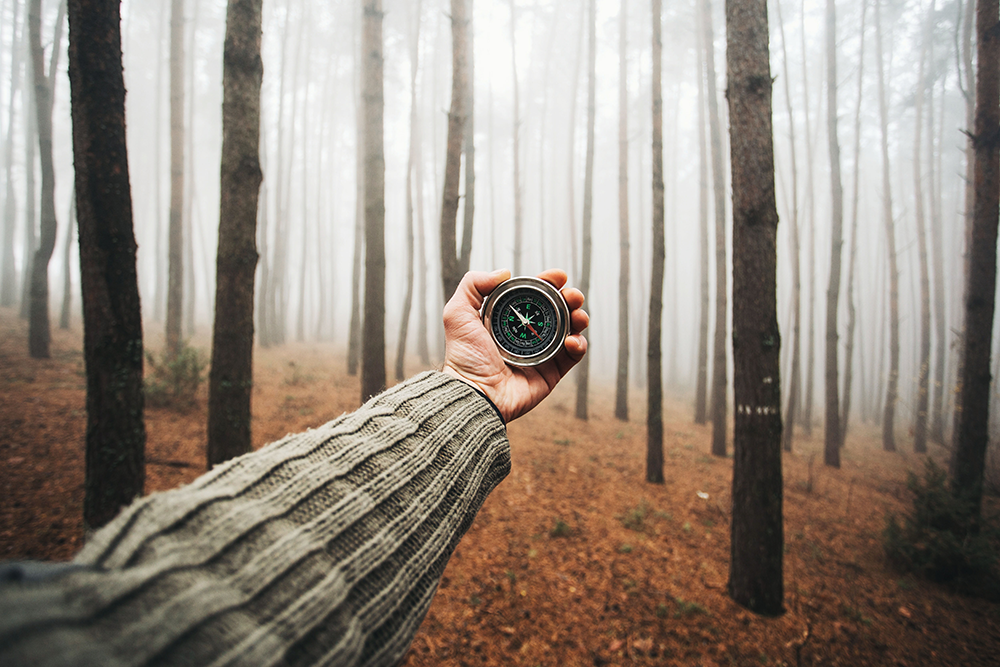
>>>>>>><<<<<<<
Build a Strong Financial and Health Foundation
>>>>>>><<<<<<<
Start by securing your personal finances and staying healthy. Life’s most common disruptions tend to be medical issues and financial struggles, so as a smart prepper, it’s best to focus on the most likely emergencies first.
Financial statistics, especially in the U.S., are alarming. Over half of Americans can’t manage an unexpected $500 expense, such as a furnace breakdown, without turning to credit cards.
Before spending on extra gear or supplies beyond the basics (like two weeks of water), make sure your financial foundation is solid. This includes having an emergency fund, a debt-reduction plan, and retirement savings.
Health is another area where many fall short. We’re getting sicker, which makes it harder to handle the physical demands of an emergency. If you find it hard to climb stairs, have addictions, or can’t stay focused under stress, survival will be a challenge.
Finally, don’t forget important life matters like insurance and estate planning. Do you have a will? Does your family know what to do if you’re in an accident and can’t communicate? Have you assigned beneficiaries to your financial accounts to avoid delays in accessing funds if something happens to you?
Pro tip: Taking regular walks around your home is a simple way to exercise while also familiarizing yourself with your surroundings, a key preparedness step!
>>>>>>><<<<<<<
Prepare Your Home for Two Weeks of Self-Sufficiency
>>>>>>><<<<<<<
Stock up on supplies so you can stay put and manage on your own if necessary. Let’s start with the home, where you spend most of your time and where you’re likely safest during an emergency. That’s why the common advice is “stay home” during a crisis.
Here are some examples of situations you might face:
- A sudden large expense or job loss strains your budget
- A severe heatwave shuts down school and work
- Power or water outages last for days
- A hurricane floods your city for a week
- A virus outbreak forces you into home quarantine
- Widespread civil unrest breaks out
- A nearby city is attacked
- Complete societal collapse (“SHTF” or better know as, the S*#t Hits The Fan)
Your goal is to survive in your home for at least two weeks without outside help. This means you can’t count on having electricity, water, gas, internet, or emergency services.
Home Survival Checklist:
- Water: Store 15 gallons per person (1 gallon per day) and have a way to purify dirty water using a portable or countertop filter.
- Food: Keep at least 23,000 calories per person (about 1,500 calories per day) of non-perishable food. This can be extra food you normally eat or long-lasting prepper food.
- Fire: Lighters, matches, and backup fire starters.
- Light: Headlamps, flashlights, candles, lanterns.
- Heating & Cooling: Indoor-safe heaters, extra blankets, and USB-powered fans.
- Shelter: A tarp (even a cheap one) can help with temporary shelter, fixing holes, or clearing debris.
- Medical Supplies: A kit with 145 essential items.
- Hygiene: Wet wipes, hand sanitizer, camp soap.
- Communication: A one-way NOAA radio or a two-way ham radio (if you know how to use it).
- Power: Spare batteries, chargers, and maybe a solar charger for your home.
- Tools: An axe, shovel, work gloves, wrench (for gas lines), zip ties, duct tape, etc.
- Self Defense: This depends on personal preference and could include pepper spray, firearms, or body armor.
- Cash: Keep as much as you can afford in cash at home.
- Mental Health: Board games, books, headphones, movies downloaded to a tablet, etc.
- Important Documents: Copies of deeds, insurance policies, birth certificates, family photos, and other key papers in both physical and digital form (on a USB drive).
- Emergency Info: Write down essential contact numbers and know where nearby hospitals are.
First In, First Out Rule:
Use what you store and store what you use. This helps you build your supplies without extra cost or waste, and applies to food, water, batteries, and other daily items.
Water:
Water is crucial, so don’t rely on last-minute solutions like filling up the bathtub. Invest in proper storage containers and have enough on hand.
Food:
While food isn’t as critical as water, having some extra non-perishable food is still a good idea. You don’t need to worry about growing or hunting your own food for short-term emergencies. You can stock up in two ways:
- Supermarket Staples: Extra of what you normally eat, which makes it easier to rotate stock and avoid waste.
- Survival Food: Special long-lasting emergency food that takes up less space and can last 20-30 years on a shelf, but is more expensive and might not be something you use regularly.
Both options have their pros and cons, but having a mix of the two ensures you’re covered for different situations.
>>>>>>><<<<<<<
Be Ready to Leave on Short Notice
>>>>>>><<<<<<<
Have a “bug-out bag” packed and ready in case you need to evacuate quickly. Emergencies can happen at any moment, often with little to no warning. You might have only seconds to leave your home, or you could gain an advantage by evacuating quickly, avoiding the rush. That’s why it’s important to always have a packed, ready-to-go bag — a bug-out bag — that contains the essentials to survive and manage the aftermath.
Your bug-out bag is essentially your emergency kit. If it’s the only thing you have when disaster strikes, you’ll be prepared to handle the situation and possibly help others. A bonus for beginners: creating a bug-out bag is very similar to putting together an emergency kit for your home. Since the bag stays at home, you can also use its supplies if you need them during a longer emergency while sheltering in place.
Because you can’t always rely on vehicles, these bags are designed to be carried on foot, using a backpack that keeps the weight reasonable while considering your local environment.
Some think a bug-out bag is only for heading to a pre-planned location, like a cabin in the woods, but that’s not always the case. And while others might not see a need to bug out for more than a few days, having a ready bag means you’re better prepared for anything. The truth is, you can never fully predict what will happen. The only time it may be reasonable to skip this step is if you or your loved ones face challenges, like mobility issues, that make bugging out impossible.
There are many situations where having a prepared bag can make all the difference.
Here are just a few examples:
- You need to evacuate quickly to avoid chaos and traffic.
- A family emergency arises, and you need to leave immediately without time to pack.
- A house fire or wildfire forces you out, with no time to grab belongings.
- You need to help an injured person outside your home and grab medical supplies from your bag.
- A natural disaster (like a hurricane or earthquake) forces you to seek shelter or stay outdoors for days.
- Civil unrest or a violent situation requires you to get away quickly.
- A local attack or domestic violence situation leaves you with no choice but to flee.
Your bug-out bag contains essentials like water and shelter supplies, as well as critical recovery items, such as important documents or photos of loved ones.
But how do you build the most versatile, well-rounded bag for a variety of scenarios? You can start with a basic 20-pound go-bag and include the following items:
- First aid kit
- 32 oz of potable water in a canteen
- Collapsible water container
- Water filter and purification tablets
- Ready-to-eat food
- Two lighters and tinder
- Headlamp
- Field knife and multitool
- 50 feet of cordage
- Tarp
- Waterproof paper and pen
- Important documents (physical and USB thumb drive)
- Cash
- Soap and toilet paper
- Nail clippers
- Hat, socks, base layers, pants, underwear, jacket
- Shemagh, bandana, or gaiter
- Radio, USB charger, and battery pack
- Respirator
- Trash and storage bags
Families often create a separate bag for children over 10, adjusting the contents to fit their needs. Be sure to prioritize your gear, ensuring your bag covers the widest range of practical scenarios possible.
>>>>>>><<<<<<<
Plan for Emergencies Away From Home
>>>>>>><<<<<<<
Create “get home bags” and everyday carry essentials for when you’re on the go. What happens if an emergency strikes while you’re away from home? Carrying a heavy emergency bag everywhere isn’t practical. The key is to strategically place essential supplies where they fit into your daily routine. Since most of us follow consistent patterns, we can use that to stay prepared.
Example situations:
- You witness a student bleeding and stumbling late at night.
- Your subway loses power between stations.
- You see a car accident on your way home, and emergency services are 10-15 minutes away.
- Two muggers corner you while walking home.
- A shooter begins attacking people in the mall you’re in.
- An earthquake hits while you’re at work, and your car is parked 30 minutes away from home.
- A sudden missile strike interrupts your relaxing day at the spa.
For most people, being prepared involves three key elements:
- A Get Home Bag (GHB): This bag should be kept in places you spend most of your time, like your car trunk, work locker, or office. Its purpose is to help you get home or stay safe if going home isn’t possible.
- Everyday Carry (EDC) items: These are essentials you keep on you at all times, like a phone, small tools, or a multitool.
- Car supplies: Even if you have a GHB in your car, it’s smart to also carry car-specific gear for roadside emergencies.
Get Home Bag vs. Bug Out Bag
A GHB is meant for emergencies when you need to get home, while a Bug Out Bag (BOB) is for leaving home in case of disaster. However, there’s some overlap. For instance, a GHB might help you survive a snowstorm by keeping you safe overnight in your car.
Key differences:
- Avoid foods or medicines that could melt if stored in your hot car trunk.
- Only partially fill water containers in cold climates to allow for freezing and expansion.
- Be mindful of local laws about carrying weapons when packing your GHB or EDC.
Everyday Carry (EDC)
EDC items are things you carry every day, so they need to be small, lightweight, and practical. Some commonly carried EDC items include:
- Important emergency contact info
- Phone (with offline maps)
- Portable battery pack
- Flashlight
- Pocket knife or multitool
- Lighter
- Paracord
- Small first-aid kit (IFAK)
- Pepper spray or self-defense tools
- Hidden cash and credit cards
Distribute these items in a way that makes sense for you. For example, you might carry your flashlight on your keychain, a pocket knife in your belt, and your first-aid kit in your purse or backpack.
Vehicle Supplies
If you have a car, keep a separate set of emergency gear on hand for road-related issues. You don’t need to carry these items on foot, so they don’t have to be in a backpack.
Common items include:
- Emergency contact info
- Maps
- Window breaker and seatbelt cutter
- Blankets (regular and Mylar)
- Jumper cables or a battery starter
- Road flares
- Extra coat, hat, sunglasses, and sunscreen
- Tire repair kit and spare tire
- Windshield scraper and deicing fluid
- A small shovel or traction boards
- First-aid kit and any prescription meds
By keeping the right supplies in the right places, you can stay prepared for whatever life throws your way, without having to carry everything all the time.
>>>>>>><<<<<<<
Learn and Practice Core Skills
>>>>>>><<<<<<<
Knowing how to use your gear and practicing essential survival skills is key. Having the right gear is essential, but survival experts know that true preparedness is a blend of gear, skills, planning, and practice. You’re not genuinely prepared if you simply buy some gear, store it away, and feel accomplished. Relying on tools you’ve never used during an emergency could lead to disaster. Even the simplest equipment can become confusing when you’re in a high-stress situation.
Take, for instance, a car window breaker. It seems straightforward, but if you’ve never tried it, you might struggle to use it under pressure. Plus, there are plenty of inferior “survival” products that fail when you need them most. Or, perhaps the emergency food you stocked up on doesn’t agree with your stomach, leaving you to face digestive issues at the worst possible time.
Once you’ve gathered basic gear for your home and go-bags, it’s time to focus on learning essential survival skills. This should go hand-in-hand with building up your supplies and refining your disaster preparedness plan.
While YouTube offers a treasure trove of free tutorials, it’s difficult to separate the reliable information from debunked survival myths passed down by word of mouth. For example, some outdated advice, like using tampons to plug bullet wounds, still circulates despite being ineffective.
To ensure you’re getting the right training, consider taking our online survival courses, where you can learn critical skills like handling medical emergencies or finding and purifying water. Additionally, we provide many free articles on key survival techniques.
Here are some core skills to start with:
- Using a compass and map
- Beginner ham radio operation
- Cleaning and dressing wounds
- Applying a tourniquet
- Stitching wounds
- Sharpening a blade using improvised materials
As you continue to learn, remember to practice your skills regularly—just as you would test your gear.
Additionally, make it a habit to conduct an annual or semi-annual preparedness review. This includes checking supplies, updating expired items, swapping seasonal clothes in your go-bags, and confirming contact information.
Your annual review is also the perfect time to run practice drills with your family, ensuring everyone is ready for any emergency.
>>>>>>><<<<<<<
Keep Learning and Share What You Know
>>>>>>><<<<<<<
Continuously improve your knowledge and involve others in the process as you go beyond the basics. Prepping becomes not only more effective but also more enjoyable when you involve your friends, family, and neighbors in the process. It’s a collaborative effort that benefits everyone involved.
In the past, some preppers adopted a “Lone Wolf” mindset, keeping their plans secret and expecting to survive in isolation with minimal resources. But this approach doesn’t align with reality. For example, during the Great Depression, studies show that communities with a stronger sense of togetherness and mutual support fared significantly better than those where people tried to go it alone.
Instead of isolating yourself, focus on building a network with people you trust. Sharing your knowledge and resources with family, friends, neighbors, and coworkers can strengthen everyone’s preparedness. This doesn’t mean broadcasting your plans to the world; you want to avoid unnecessary attention or putting yourself at risk during an emergency. But by recruiting those closest to you, you’ll build a buffer of support that enhances everyone’s readiness.
A simple way to introduce others to prepping is by sharing resources. For instance, you can use our free kit builder to send links to pre-populated gear lists, like a first aid kit, making it easier for them to take their first steps into preparedness without feeling overwhelmed.
Local training programs offer another great opportunity to connect with like-minded individuals.
Community Emergency Response Team (CERT) courses, for example, are free and widely available. You can attend simply for the knowledge or take the next step by becoming a community volunteer, ready to assist during a crisis. Forming or joining a “resilience circle” or mutual aid group can further strengthen your preparedness efforts while building a sense of community.
>>>>>>><<<<<<<
Please visit our SURVIVAL AND PREPAREDNESS category for additional valuable information.
>>>>>>><<<<<<<

